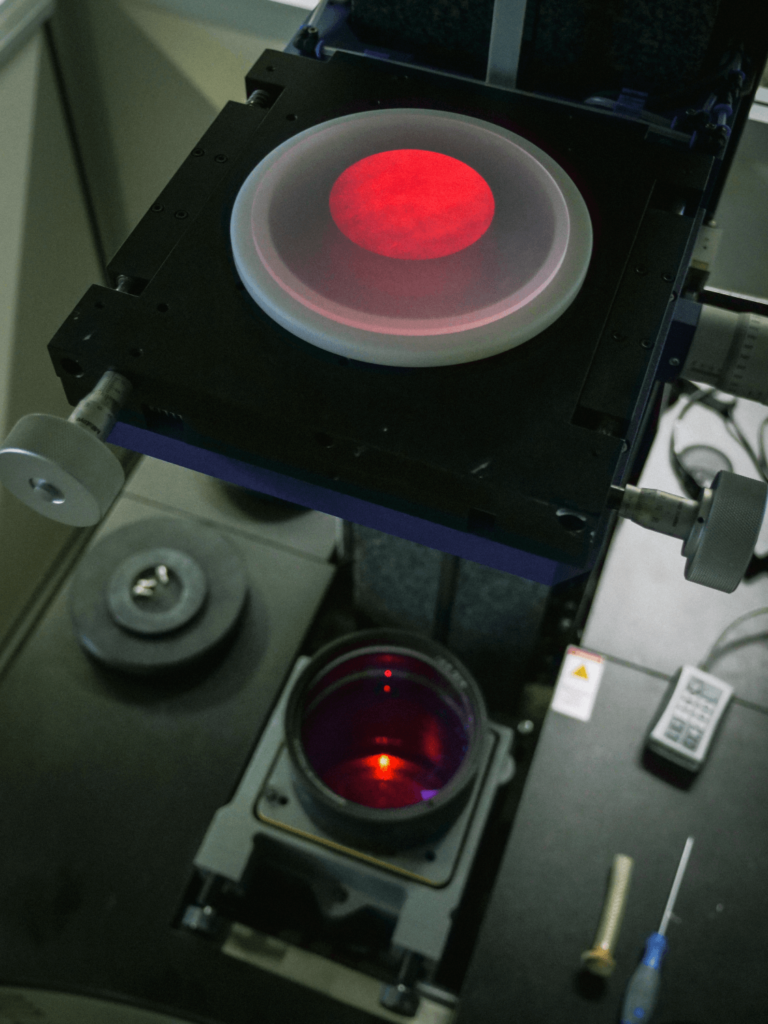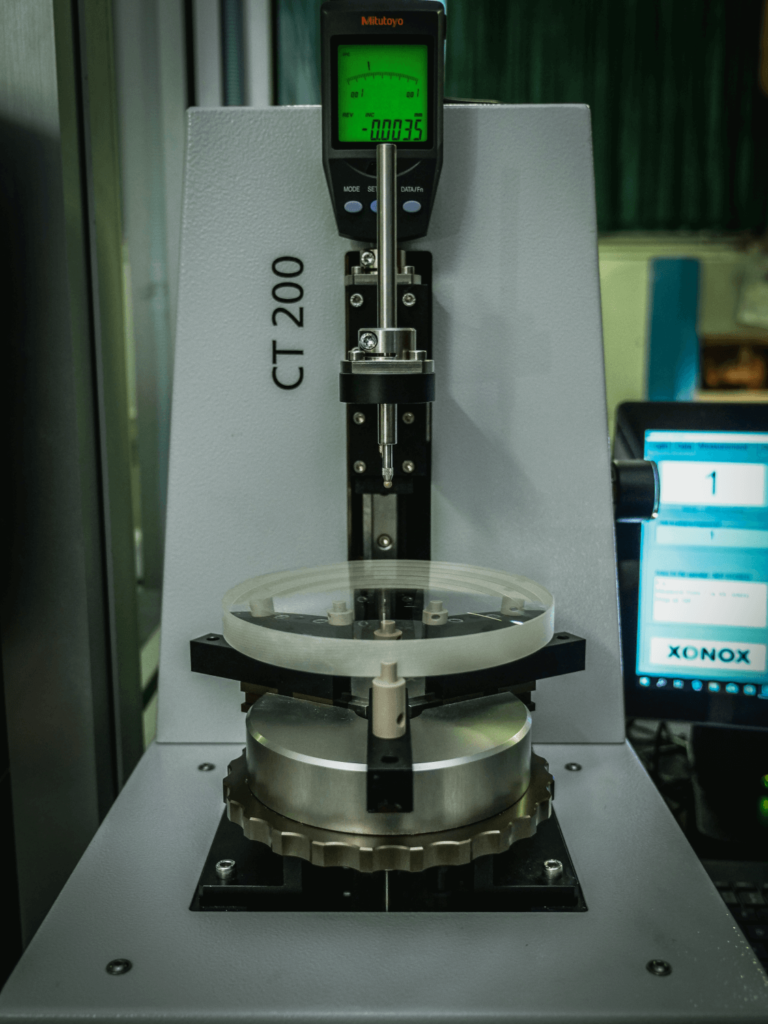Optical Metrology is the science of measuring with light the properties of optical components and systems, and it is crucial for ensuring optics consistently meet their desired specifications and function.
Optical Metrology is a keystone in the manufacturing of high-precision optical components necessary to measure focal length, roughness, to test surface properties, shape, dimensional deviations and ensure compliance with design and international standards.
Though designers strive for perfection, some optical components have residual aberrations generated by manufacturing and alignment processes, as result Optical Metrology is the instrument to recognize these imperfections, that can lead to wavefront errors, angular error, pyramid error, and any other deviation from design requirements, metrology is therefore the essential tool for manufacturing precision optics.
Optical Metrology is particularly challenging when extremely high precision is required, but since it is an accurate measuring technique, highly sensitive, with exceptional resolution, it is the most non-destructive technique adopted in photonics and optics.
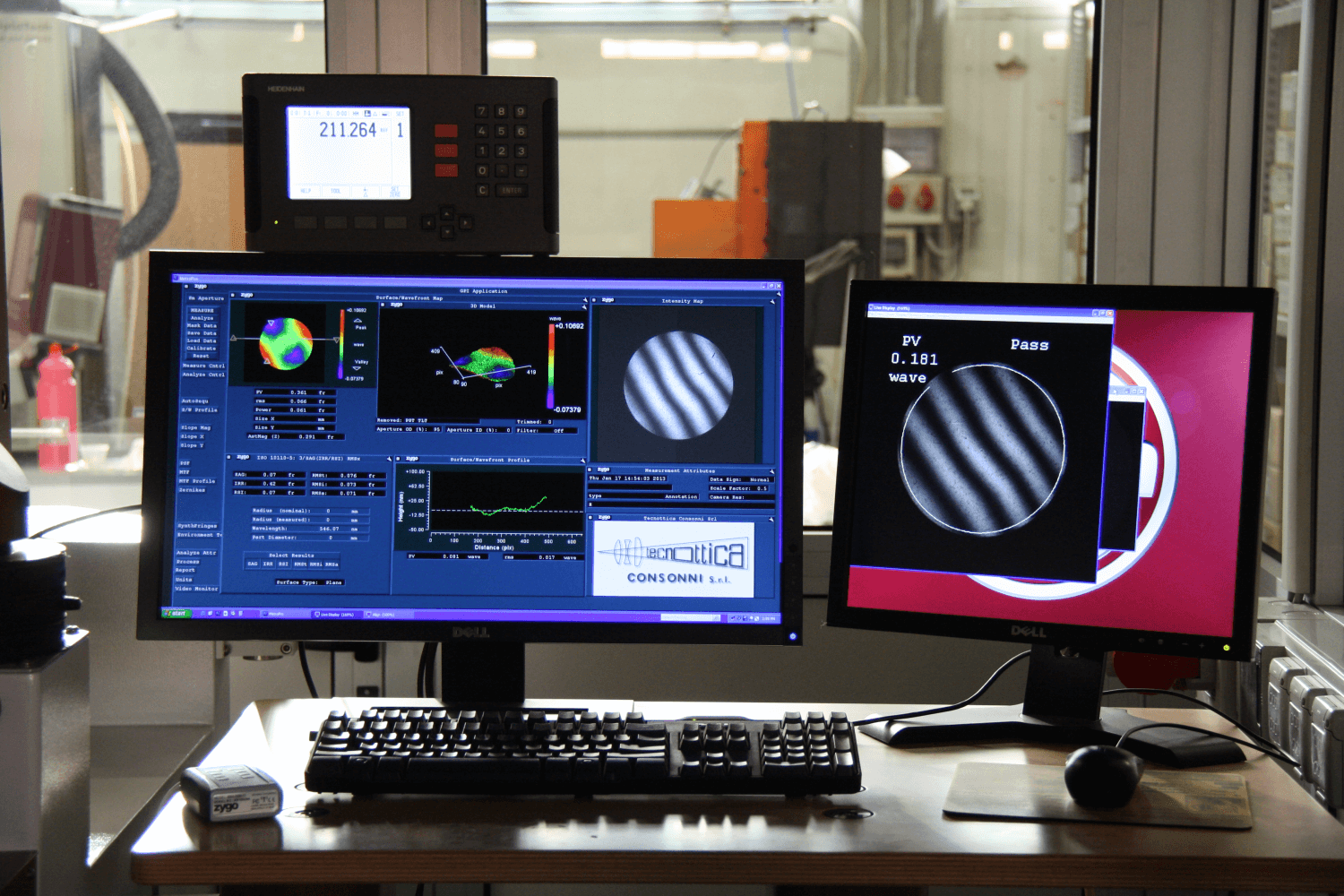
Optical Measurement Systems
Optical Measurement Systems for Industrial Inspection may use a variety of instruments and techniques to assess overall quality of an optical system’s performance.
Performance metrics must be specified and tested for each single element and for the entire assembled optical system, even after the individual components have been measured independently.
The technique chosen for the measurement depends on the geometry of the component tested, the equipment available and the experience of the technicians performing the measurement.
It is also essential to have a clear understanding of the type of optical system application to set the correct conditions for these tests, use the ideal spectral regions, lighting conditions, sources and detectors.
Based on the Optical System parameters, different techniques can be adopted,
- the most common and versatile instrument is the interferometer, extensively adopted for characterizing surface irregularity (IRR) and measure Sagitta (and Radius of curvature directly related);
- non-interferometric measurement are used for the basic understanding and qualification of the optics,
- to test some specific optical systems, such as coating, large optical format and optics for laser applications, particular instruments and techniques are needed.
INTERFEROMETRY
Interferometry is a powerful optical testing technique which uses the interference of superimposed waves to extract information. It allows for an accurate, non-contact measurement of a surface or system’s optical quality.
Interferometers are devices that extract information from interference. Widely used in science and industry for measuring microscopic displacements and surface irregularities, in optics they are capable of measuring length and shape of optical components with nanometer accuracy and are the highest precision length measuring instruments on the market.
In addition to interferogram-evaluation metrics, interferometry may produce a wide number of other metrics gleaned from the interferogram itself.
- If applied to a single component (flats, spherical lenses, aspheric lenses, and others) it produces the surface figure or surface’s irregularity (<λ/20), flatness, or waviness.
- If applied to an optical system the resultant is the transmitted or reflected wavefront error (TWFE or RWFE, sometimes TWE or RWE) of the entire system.
- Slope or gradient error is another detected parameter, particularly important when working with aspherical elements.
Type of Interferometers
There are various Interferometers configurations available; all the Classical ones are able to characterize the surface, the aberration, the roughness of the optical components, with high accuracy, of the order of a fraction of the wavelength.
The most common configurations are:
- Mach–Zehnder interferometers utilize one beamsplitter to separate an input beam into two paths. A second beamsplitter recombines the two paths into two outputs, which are sent to photodetectors.
- Michelson interferometersuse a single beamsplitter for splitting and recombining the beams.
- Twyman–Green interferometers measure optical components with a monochromatic point source as the light source.
- Fizeau interferometers, unlike Michelson interferometers, require only one mirror, as they use a single beamsplitter oriented perpendicularly.
- Fabry–Pérot interferometers allow for multiple trips of light by using two parallel partially transparent mirrors instead of two separated beam paths.
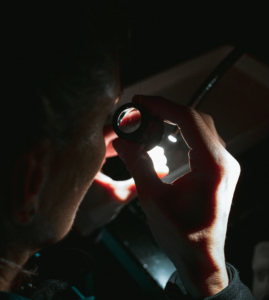
NON-INTERFEROMETRIC Measurements
Optical Metrology tests the overall performance of an optical system or component, for this reason it comprises also Non-Interferometric Measurement that addresses to other optical parameters, such as Diameter, Thickness, Center and Edge Thickness Variation, Angles, Surface Roughness, Effective Focal Length and Back Focal Length, and other metrics, often calculated from these fundamental performance measurements.
Here follows a brief description of Non –interferometric measurement techniques.
Diameter
The diameter and its tolerances are important measures in case the optic is going to be mounted in a support or in a system and it is verified with the help of a Micrometer.
Thickness, Center and Edge Thickness Variation (EVT)
The thickness of the lens and its tolerances measured at the center and at the wedges defines the shape of the component and its properties, a wide variation can affect the optical performance and aspect.
Centering
The test of Centration measures any decenter in the optics that causes the focusing beam to diverge.
Angles
Angle measurements, between surfaces of prisms, polygons, wedges, windows, and their tolerances are critical to the performance of the optic.
Surface Quality
The measurement of scratches and digs on the surface of an optic and their tolerances are necessary to certify that they do not affect system performance.
Surface Roughness
To measure the deviation of a flat surface that defines the precision grade of the optics in terms of values of waves (λ).
Modulation Transfer Function (MTF) and Midspatial frequency (MSF)
The Modulation Transfer Function specifies the image quality achieved by an imaging system. The MSF error can be derived from a measured MTF curve.
Focal Length
Effective Focal Length (EFL) and Back Focal Length (BFL) are revealed by some rapid metrology Measurement technique.
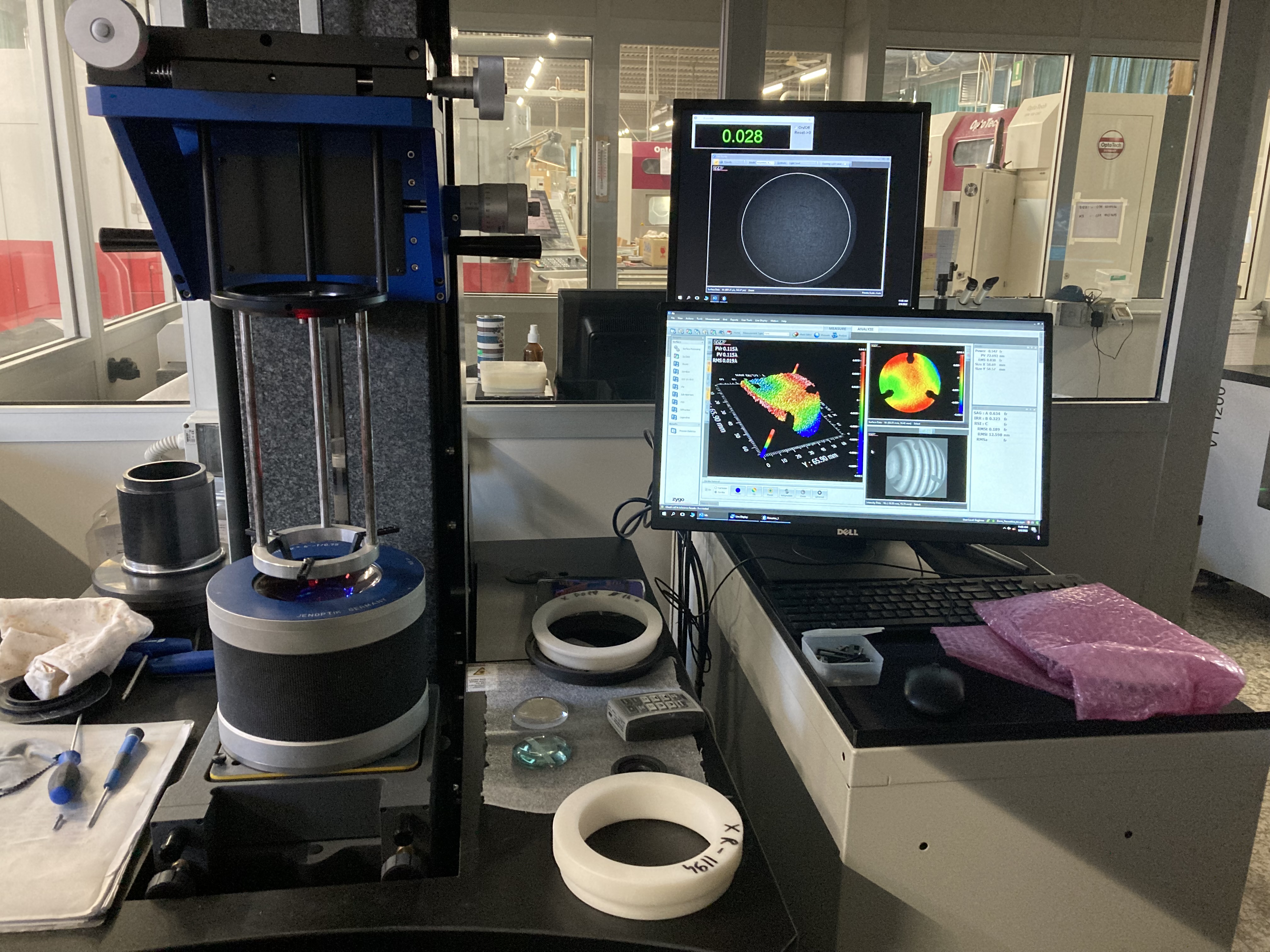
SURFACE INSPECTION
A particular mention goes to Non-interferometic optical metrology methods used to measure Surface Roughness and Topography, a mandatory qualification for optical systems that works in laser applications. Devices used for this kind of measurement are mainly Spectrophotometer, but also Profilometer, Deflectometer, Stereovision and Digital Holography.
Spectrophotometer
The Spectrophotometer is a highly flexible instrument with many different applications, in fact it measures the intensity of electromagnetic energy at each wavelength of light in a specified region (ultraviolet, visible, infrared). In Optical Metrology it is the most used tool to test the performance of the coating and able to characterize its transmission and reflectivity, thanks to its characteristics and because it is a non-destructive method.
A classic spectrophotometer consists of a broadband light source, a monochrometer, and a detector.
The light from the source is sent into the monochrometer, that split it into its component wavelengths, and each narrow band is sent to the test optic (witness sample); the reflected light is collected onto a detector, that determines the coating’s reflectivity or transmission at a given wavelength.
Our Metrology Department
At Tecnottica we fully understand the importance of metrology for the manufacturing of precision optical components and systems and to meet our customers’ requirements; for these reasons optical measurements are an integral part of the production process and quality control.
Our metrology and control department plays an important role in the verification of quality and design, and ensures that every optical component we manufacture and characterize fully meets them and it is optimized to the application for which it is designed.
Our metrology department and Quality Control Experts enable us to fully measure and qualify single lenses, as well as optical systems, provide radii of curvature measurements with sub-micrometric accuracy, measurements of prisms and wedges, thicknesses and sagitta values, EFL, measurements of resolution and MTF curve, run interferometric analysis and cosmetic defects analysis of optical surfaces.
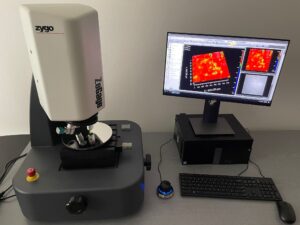 Our advanced in-house metrology area has been specifically designed to have complete and effective control after each stage of the manufacturing of our precision products, and its equipment includes cutting-edge measurement devices, such as:
Our advanced in-house metrology area has been specifically designed to have complete and effective control after each stage of the manufacturing of our precision products, and its equipment includes cutting-edge measurement devices, such as:
- Interferometer Schneider SLI 101 equipped with hardware Zygo 4”
- Interferometer Optotech OWI 150 XT equipped with hardware Zygo 6” and software Zygo Metro Pro
- Interferometer XONOX VT1200 4”
- Interferometer XONOX VT1200 6” equipped with hardware Zygo 6” and software Zygo MX
- Transmission spheres for 4” and 6” interferometers
- Thickness measurer XONOX CT200
- Trioptics OptiSpheric
- Trioptics PM150MAN
- Trioptics PrismMaster
- ZEISS 50X microscope with integrated camera and analysis sofware
- Spectrophotometer EssentOptics PHOTON RT 190-4900
- Shimadzu IRAffinity-1S
- Spettrofotometro Perkinelmer Lambda 1050+
- 3D Optical System ZeGaGe Pro HR
Surface quality and flatness of each of our optical component is tightly controlled, we run extensive in-house optical testing and commit environmental testing to specialized laboratories, to ensure all components will perform as expected in spite of temperature, shock and vibration, or humidity.
The pursuit of higher measurement accuracy prompts us to continue investing in optical test equipment, and expanding our capabilities in optical metrology.
Through this philosophy we are able to offer our customers a range of products with the highest quality, certified and guaranteed and to stand behind our products with complete confidence.

